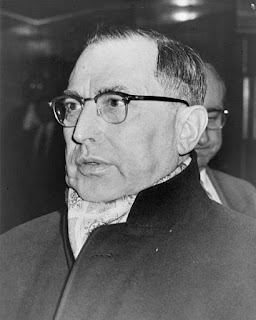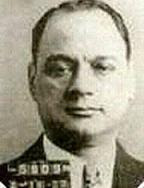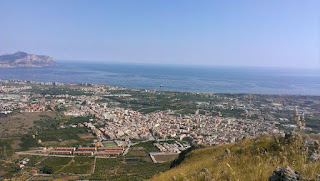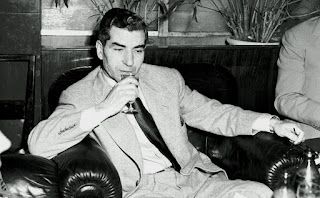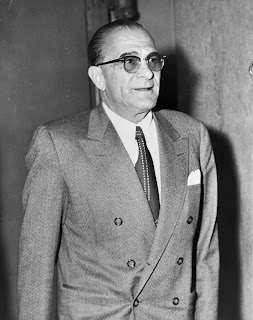From shores of Lake Como to London’s Café Royal
 |
| The Art Deco memorial in Hampstead Cemetery, built by Bianchi for his widow, Martha |
He moved to England when he was only 16, hoping to build a career in catering and soon found work doing odd jobs in a London kitchen. However, he had been in the city barely a year when the outbreak of the First World War meant he had to return to his homeland for national service. In his case, it was with the Alpini, Italy’s mountain brigades, with whom he was an interpreter.
Eager to resume his career in England, once the war was over Cesare took a job at the Palace Hotel in Aberdeen. It was there he met Martha Gall, the woman who would become his wife.
They were married in 1921 and Martha soon gave birth to their daughter, Patricia. Ambitious, Cesare persuaded his wife to leave Scotland behind so that he could make another attempt to establish himself in London.
His culinary talents took him a long way as he worked his way up from modest beginnings to land a place in the kitchen at the Café Royal in Regent Street, which at the turn of the century had become one of the capital’s most fashionable restaurants, the place to be seen for society figures.
The Café Royal had a heady reputation but Bianchi was quite at home, soon winning many compliments for his culinary skills. Ultimately, he was promoted to head chef. He and Martha and their daughter set up home in Hampstead, in Lawn Road.
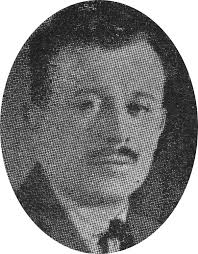 |
| Cesare Bianchi's position counted for nothing when he was declared an alien |
The grave, which now has Grade II listed status, is set in a triangular plot. Either side of the angel are two reliefs, one showing Cesare with Martha, who is cradling the baby she never lived to see, sitting on a park bench. He had hoped one day that he would be buried alongside her.
Martha’s sister, Mary, helped Cesare bring up his children and he was able to return to work in Regent Street.
When peace in Europe was shattered again in 1939, Bianchi’s life took another unwelcome turn. Although he had been resident in England for much of his adult life and had fought on the side of the Allies when Italy opposed the Central Powers (Germany, Austria-Hungary and Turkey) in World War I, Bianchi found himself classed as an alien in World War II after Italy entered an alliance with Germany.
His status in London counted for nothing. He, along with many other Italians and Germans, were taken to Liverpool, set to board the Arandora Star, a ship that would take them to internment in Newfoundland in Canada.
 |
| Smithfield Market, where Bianchi worked, was destroyed by a German V2 flying bomb |
The device hit the side of the Arandora Star. The resulting explosion killed everyone in the ship’s engine room and caused the ship to start sinking rapidly. Bianchi was one of more than 700 Italian prisoners being contained in cramped dormitories - along with almost 600 Germans. Two thirds of the Italians drowned but Bianchi somehow survived and was picked up by a rescue ship.
He was still interned as planned but instead of Canada - or Australia, where others were shipped - was taken to a camp much closer to home on the Isle of Man, where he would remain until the end of 1942. At that point it was considered safe for him to return to London, even though it was not until the autumn of the following year that Italy signed an armistice with the Allies and itself declared war on Germany.
Bianchi rejoined Mary Gall and his children in Hampstead and found a new job in Smithfield Market, with which he hoped to rebuild his career.
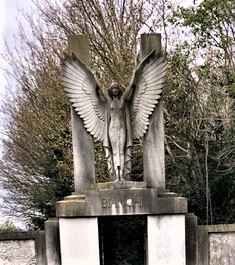 |
| The winged angel that sits above the grave of Martha Gall-Bianchi in Hampstead Cemetery |
On 8 March, 1945, in one of the last attacks that Germany would launch against Britain, Smithfield Market was struck by a V2, one of the second generation of flying bombs used by the Nazis and the forerunner of the inter-continental ballistic missile.
The explosion caused by the rocket destroyed the market and killed 110 people who were inside at the time, including both Cesare Bianchi and Mary Gall, whose presence there may have been because she was one of a large number of women shopping on that day.
In the circumstances, it was not possible for Bianchi to be buried alongside Martha. Along with the other victims of the bomb, he was laid to rest at the London Cemetery in Manor Park in the borough of Newham in the east of the city.
 |
| The Villa d'Este on the shores of Lake Como near Cernobbio, where Cesare Bianchi was born |
Bianchi’s hometown of Cernobbio is notable for the Villa d’Este, the vast complex built as a 16th century summer residence for the Cardinal of Como, and one of many fine villas fronting the water. The town once attracted large crowds hoping to catch a sight of movie star George Clooney, who had a house at nearby Laglio and would occasionally be spotted at a cafe in Cernobbio. Scenes from the movie Ocean’s 12, in which Clooney starred, were filmed locally. The town generally has more locals than tourists. On summer evenings and weekends when the main piazza is full of families and couples.
 |
| The 15th century facade of the Duomo in the centre of the lakeside town of Como |
Cernobbio is just a few kilometres from Como, the town at the southern tip of the eastern branch of Lake Como. It is a pleasant town with an impressive cathedral in the historical centre, the construction of which spanned almost 350 years, which is why it combines features from different architectural areas, including Gothic and Renaissance. The façade was built in 1457, its characteristic rose window and a portal flanked by Renaissance statues of Pliny the Elder and Pliny the Younger, both of whom were from Como. This Duomo replaced the earlier 10th-century cathedral, San Fedele.
Also on this day:
1912: The birth of singer-songwriter and actor Renato Rascel
1937: The death of Communist leader Antonio Gramsci
1942: The birth of disgraced entrepreneur Vittorio Cecchi Gori
2014: Popes John XXIII and John Paul II made saints
Home
